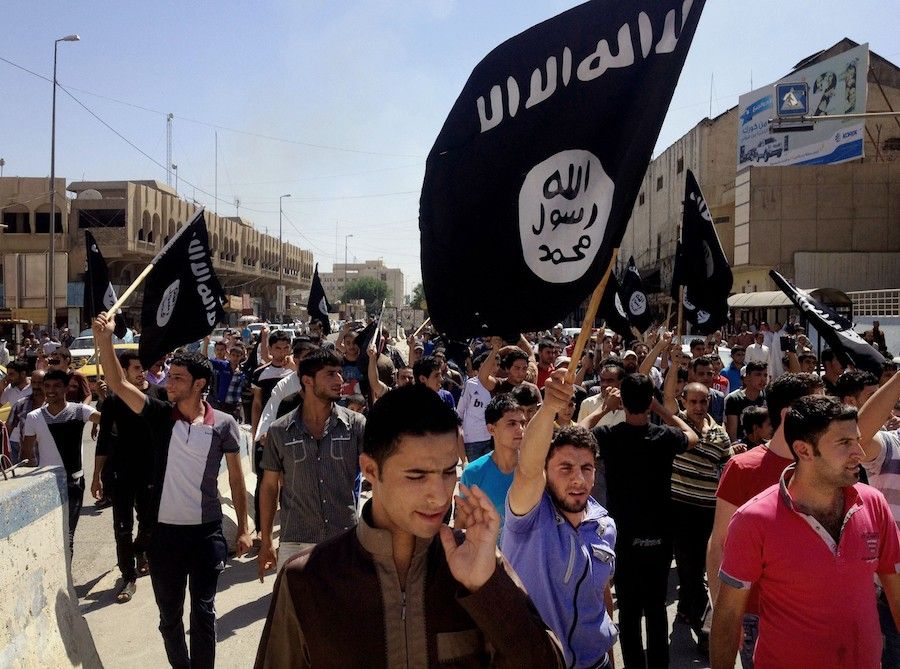 Following the near destruction of ISIS in Iraq and in the U.S. “zone” in northeastern Syria, and then a call recently by the President Donald Trump to pull out of Syria, administration officials, pundits and foreign leaders have all urged the president to keep troops in Syria. As justification, these officials—including Secretary Mattis—often cite deleterious effects of the U.S. troop pullout from Iraq in 2011, including the breakdown of the Iraqi political system and ISIS’s 2014 sweep of Sunni Arab areas.
Following the near destruction of ISIS in Iraq and in the U.S. “zone” in northeastern Syria, and then a call recently by the President Donald Trump to pull out of Syria, administration officials, pundits and foreign leaders have all urged the president to keep troops in Syria. As justification, these officials—including Secretary Mattis—often cite deleterious effects of the U.S. troop pullout from Iraq in 2011, including the breakdown of the Iraqi political system and ISIS’s 2014 sweep of Sunni Arab areas.
But such analogies, even when true, need context. President Bush agreed with Iraq in 2008 to withdraw U.S. troops by December 2011. But President Obama then sought a residual training/advisory presence of 5,000 troops post-2011, not for combat missions but in part for political motives with Iraq and regional states. Such “presence missions,” even if not primarily combat-oriented are common political tools, e.g., U.S. naval presence in the Gulf, U.S. battalion in the Sinai. In the end, however, the Iraqi parliament balked at legal immunities for U.S. soldiers, and troops had to be withdrawn in accordance with the 2008 agreement. Then Iraq fell apart.
In considering the “Syria today” analogy, it is important to note that a post-2011 U.S. Iraq presence could not, as some imagined, have had the same impact on Iraqi internal governance and security as did 100,000 plus American combat troops 2003-9. Such troops would have been guests in a sovereign country with no combat role—but however few, they could have helped cope with ISIS’s rise by signaling U.S. commitment, important for many Iraqis including then-Prime Minister Nouri al-Maliki, paranoid about a return of the Sunni-Arab centric Baathists. Furthermore, U.S. forces ”in harm’s way” command Washington attention in ways no ambassador can.
Finally, any U.S. presence changes the calculations of other actors, hostile or friendly. Had a small U.S. force been accepted by Baghdad, Iraq would have been welcomed more by other Arab states fearing its vulnerability to Iran (and thus Iran’s brutal effort to block such a presence). Even ISIS might have opted for a more cautious assault on Iraq in 2014. (A handful of U.S. troops helped keep a million Warsaw Pact soldiers from overrunning Berlin. The 1949 withdrawal of a U.S. military training mission from Korea opened the door to invasion.)
But while “presence” per se provides certain abstract political cards such as commitment and focus, to have a real role any U.S. military presence in—or air cover over—northeastern Syria after final defeat of ISIS must have specific military and political missions. This is doubly important because unlike in Iraq where the U.S. now is trying again to keep a residual military presence, the U.S. will never be “invited” to stay in Syria by the Assad regime. Eliminating ISIS remnants and assuring they never return to northeastern Syria can remain the ”official” mission (that helps get around Assad’s opposition and meets the Congress’s “anti-terrorist” authorization). But this mission says nothing about the larger goal as apparently discussed in the president’s meetings with Macron: to pressure the Assad regime and contain Iran.
A U.S. military presence in the northeast (and around al Tanf in the south), given U.S. air control and on-the-ground allies, does deny those areas to Assad and his allies, complicates in a crisis any major ground reinforcements from Iran to Syria (as the routes parallel U.S. positions), and provides a ”platform” for potential political or military opposition to Damascus by the Syrian population; these missions are generally similar to those successfully executed with the U.S.-British no-fly zone over Kurdish areas of northern Iraq 1991-2003. But even such military presence and capabilities do not automatically generate political success in the larger Syrian conflict.
Rather, the presence must be tied to an overall military-diplomatic-economic plan in response to Damascus’ grave threats to its own citizens and the region. Such a plan could be based on UN Security Council Resolution 2254 (2015), which acknowledges Assad’s threats, along with cooperation with Turkey’s troops in northwestern Syria (and deconfliction between them and Syrian Kurds allied with the U.S.), common efforts with Israel and nearby Arab states, and a block on both international reconstruction assistance and transfer of northeastern oil fields to Assad, absent an acceptable political outcome.
Such a plan cannot guarantee results, but by tying down Moscow, Teheran and Damascus with the specter of stalemate, it would provide what is missing today—a reason for them to compromise on Syria’s future. Conversely, a total U.S. air and ground pullout would, as the 2011 analogy demonstrates, endanger conflict and chaos, but this time even more serious than from ISIS—U.S. allies Israel, Turkey and possibly Saudi Arabia pulled into confused combat with the Assad-Iran-Russian alliance, without an American referee.
No comments:
Post a Comment